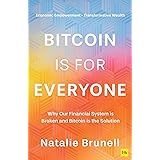PPI Data & Fed Rate Cuts: Igniting the Next Crypto Bull Run?
The financial world often feels like a complex web of numbers and predictions, especially when it comes to the volatile cryptocurrency market. Recently, a significant piece of economic data, the Producer Price Index (PPI), has sent ripples through this ecosystem. This data point, often a precursor to broader inflation trends, is now signaling a potential shift in central bank policy – specifically, the likelihood of **Fed rate cuts** in the near future. As discussed in the accompanying video, these macroeconomic movements could profoundly impact the trajectory of both **Bitcoin** and the broader **altcoin season**, potentially setting the stage for significant gains.For those closely watching the market, understanding the nuances of economic reports like PPI is crucial. These figures don’t just exist in a vacuum; they directly influence the decisions made by central banks like the U.S. Federal Reserve. When the Fed adjusts interest rates, it sends powerful signals across all asset classes, including the highly sensitive cryptocurrency market. Therefore, the recent PPI data release holds particular significance for investors looking to position themselves strategically in the coming months.
The anticipation of **Fed rate cuts** has long been a hopeful whisper in the crypto community, seen as a major catalyst for bullish movements. This is because lower interest rates generally lead to increased liquidity in financial markets, making riskier assets like cryptocurrencies more attractive. The confluence of favorable economic data and the historical patterns of market cycles suggests that we might indeed be approaching a pivotal moment. This article will delve deeper into the implications of the latest **PPI data** and what it could mean for your crypto portfolio, expanding on the insights shared in the video.
Understanding PPI Data and Its Crypto Impact
The Producer Price Index (PPI) serves as a vital economic indicator, measuring the average change over time in the selling prices received by domestic producers for their output. Essentially, it tracks inflation from the perspective of the producers themselves. When PPI numbers come in lower than expected, it suggests that inflationary pressures are easing at the wholesale level, which typically translates to moderating consumer prices down the line.The recent PPI data proved to be significantly lower than anticipated, providing a much-needed breath of fresh air for market participants. The year-over-year PPI (YoY) came in at an actual 2.6%, notably below the expected 3.3%. Similarly, the Core PPI (YoY), which excludes volatile food and energy prices to provide a clearer picture of underlying inflation, registered an actual 2.8% against an expectation of 3.5%. These figures are particularly important as they offer a strong signal to the Federal Reserve.
Historically, lower-than-expected inflation data empowers the Fed to consider easing its monetary policy, primarily through reducing interest rates. In essence, if inflation is cooling, the central bank has less reason to keep borrowing costs high to curb price increases. This is a highly bullish development for the cryptocurrency market. Reduced interest rates mean that money becomes cheaper to borrow, encouraging investment and speculation across various asset classes. Consequently, capital tends to flow into higher-risk, higher-reward assets like Bitcoin and altcoins, driving up their valuations.
Bitcoin’s Price Action: Navigating Key Levels
Bitcoin, the undisputed king of cryptocurrency, has shown remarkable resilience and upward momentum in response to recent market narratives, including the latest PPI data. As highlighted in the video, Bitcoin recently achieved price levels not seen in approximately 15 days, climbing as high as $114,000. This upward movement is a clear indication of renewed buying interest and a positive market sentiment gripping investors.However, the journey upward for Bitcoin is rarely a straight line, and key resistance levels often present hurdles. Traders and analysts are currently eyeing potential resistance points around $115,000 and possibly $117,000. Should Bitcoin encounter strong selling pressure at these thresholds, a temporary rejection or pullback would not be unexpected. Conversely, a decisive break above these levels could signal a strong continuation of the rally, fueled by bullish news and increased confidence in a softening economic policy from the Fed.
Despite the prevailing excitement, it’s also crucial to acknowledge potential downside risks. Some market analyses suggest that Bitcoin might need to retrace to around $104,000 to “repeat past bull market dips” and undergo a “post-euphoria consolidation” phase. This perspective suggests that while the overall trend might be bullish, a healthy market correction could occur to reset investor expectations and allow for seller exhaustion before the next leg up. Interestingly, even with these potential dips, Bitcoin has managed to defy historical trends, showing a surprising 5% gain in September, a month traditionally known for its bearish sentiment in financial markets.
Altcoin Season on the Horizon?
While Bitcoin often leads the charge, the true excitement for many cryptocurrency enthusiasts lies in the prospect of an “altcoin season.” This refers to a period when various alternative cryptocurrencies (altcoins) experience significant price surges, often outperforming Bitcoin. The current market environment, bolstered by positive PPI data and the increasing likelihood of Fed rate cuts, appears to be laying the groundwork for such a phenomenon.Several altcoins are already exhibiting promising signs. Ethereum, the second-largest cryptocurrency, has been finding a strong bounce, potentially challenging previous support levels. XRP, another prominent altcoin, is cautiously approaching key trendlines, with significant anticipation building around the potential launch of an XRP ETF (Exchange Traded Fund) as early as October. Other coins like Dogecoin and Pepe have also seen rallies, indicating a broader appetite for speculative assets.
Beyond the established names, the market is also witnessing explosive growth in lesser-known projects. For instance, `pump.fun` recently captured headlines by distributing over $15.5 million to creators in a single week, showcasing the rapid innovation and liquidity within the altcoin space. Similarly, Avalanche, a long-standing player, has finally begun to show significant movement, climbing around 20% over the last year, with much of that surge occurring very recently. While these rapid pumps can be exhilarating, investors should exercise caution, as quick gains often precede profit-taking by early participants, as was noted in the video regarding `pump.fun` creators.
Economic Indicators & Future Fed Moves
The recent PPI data is not an isolated event; it’s part of a broader tapestry of economic indicators influencing the Federal Reserve’s decisions. When data points like the Producer Price Index show a consistent trend of moderating inflation, coupled with other indicators such as weaker jobs data, the argument for central bank intervention becomes stronger. These factors collectively provide the “green light” for the Fed to consider adjustments to its benchmark interest rate.Lowering interest rates directly impacts the cost of borrowing for businesses and consumers, effectively injecting more liquidity into the economy. This policy shift is particularly bullish for growth-oriented and speculative assets like cryptocurrencies. Financial models currently indicate a high probability of impending rate cuts. Some projections suggest a 90% chance of rate cuts occurring in the near future, with a significant 66.3% chance of a 0.75% reduction by December. Such a substantial cut could serve as a powerful catalyst for a market-wide rally.
However, the market’s response to these impending changes isn’t always straightforward. The concept of “buy the rumor, sell the news” often comes into play, where assets rally in anticipation of an event, only to see a pullback once the actual news breaks. This dynamic suggests that while the long-term outlook remains bullish, investors should be prepared for potential short-term volatility around the actual announcement of Fed rate cuts. The sustained bullish sentiment, despite these short-term fluctuations, underlies the growing belief among many that the crypto market is entering a “super cycle” of accelerated growth.
Corporate Crypto Adoption and Market Catalysts
Beyond macroeconomic factors, the increasing embrace of Bitcoin and other cryptocurrencies by corporate entities is a significant bullish signal. The “corporate treasury strategy,” pioneered by companies like MicroStrategy, has proven to be a highly effective model for boosting balance sheets and demonstrating profitability. By converting traditional cash reserves into Bitcoin, these companies are not only hedging against inflation but also positioning themselves to benefit from the long-term appreciation of digital assets.Michael Saylor, the outspoken CEO of MicroStrategy, remains a prominent figure in this movement, with his company holding approximately 140,000 Bitcoins. Interestingly, Saylor also personally owns about 17,732 Bitcoins, which he has publicly stated will be “burned” after his passing – a symbolic gesture of commitment to the Bitcoin network. This trend of institutional adoption is broadening, as evidenced by GameStop narrowing its Q2 losses, partly attributed to its Bitcoin holdings. Such examples underscore the growing recognition of Bitcoin as a legitimate and valuable treasury asset.
Another monumental catalyst on the horizon is the potential approval of various cryptocurrency Exchange Traded Funds (ETFs) for altcoins like XRP, Doge, ADA, and SOL. The approval of a Bitcoin futures ETF in 2021 was a landmark event, albeit one that coincided with a market top. This raises an intriguing question: could these new altcoin ETFs act as a similar “top signal” or will they unleash an unprecedented wave of institutional investment, propelling the market to new highs? Regulatory shifts, particularly favorable stances from figures like former SEC chair Paul Atkins and even political endorsements, indicate that the crypto industry’s “time has come,” suggesting a strong push for greater mainstream integration and accessibility through regulated investment vehicles. The ongoing positive sentiment, particularly driven by favorable **PPI data** and the increasing whispers of impending **Fed rate cuts**, continues to fuel optimism across the entire crypto landscape.







